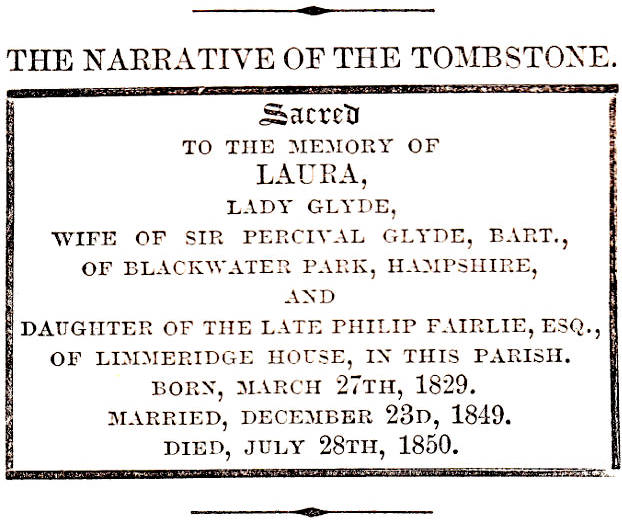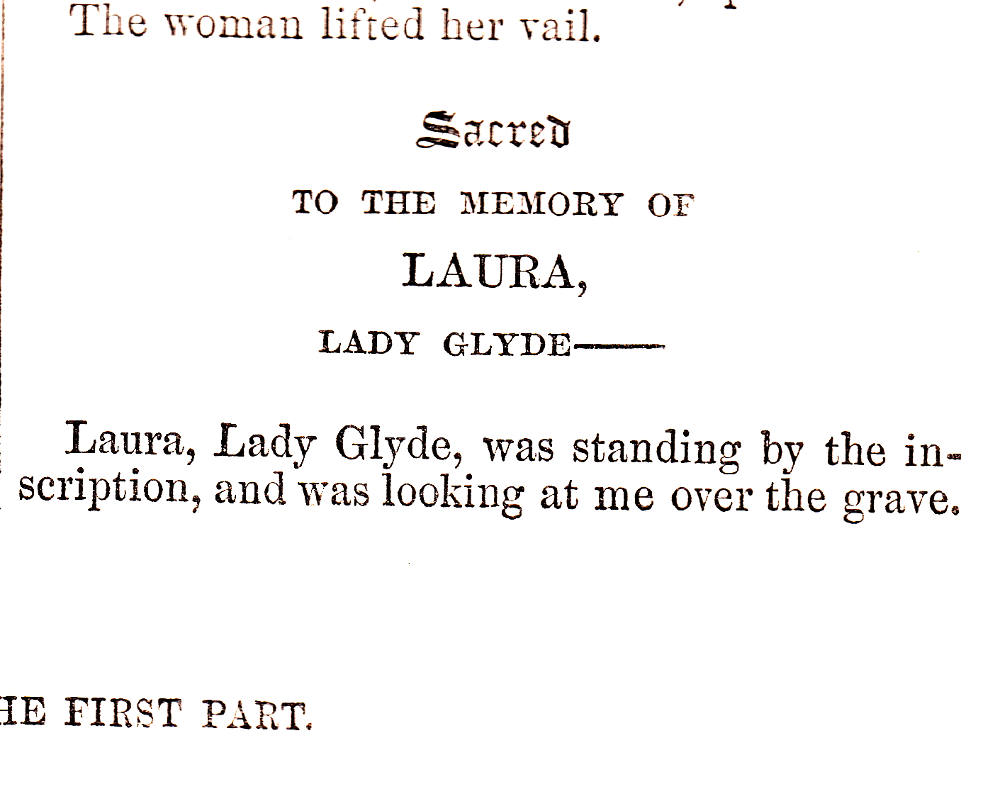"Laura, Lady Glyde, was standing by the inscription, and was looking at me over the grave."
John McLenan
19 May 1860
11.2 cm high by 9 cm wide (4 ⅜ by 3 ½ inches), vignetted, p. 309; p. 170 in the 1861 volume.
Twenty-sixth regular illustration for Collins's The Woman in White: A Novel (1860).
Scanned image and text by Philip V. Allingham.



